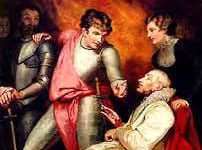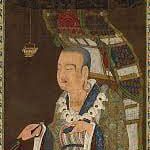Shakespeare | Characterization of Hamlet
Shakespeare | Characterization of Hamlet
Shakespeare | Characterization of Hamlet
William Shakespeare (1564-1616) is a great maestro of characterization. He has characterized Hamlet, the principal character of the play, by the same name with exceptionally great skill and success as the protagonist (hero/ leading character) along with the attributes of a philosopher, a critic, a lover and a poet. Let us analyze Hamlet as depicted by the dramatist Shakespeare, with reference to the text of the play, as below:
First, Hamlet is portrayed as the protagonist (hero) of the play. But as a hero, he suffers from an alleged flaw as he is over speculative, scrupulous and bends towards moral consideration of his function in the play. His sole aim (target) is to avenge his father’s murderer king Claudius. He brings about his avenge upon Claudius, after much delay and mental sufferance. He, from the very beginning of his debut on the stage, seems to be meditative and indifferent to worldly affairs. In his first soliloquy he utters:
”How, weary, stale, flat and unprofitable
Seem to me all the uses of the world.”
Like all other tragic heroes of Shakespeare, Hamlet suffers from acute affliction and conflicts- both internal and external. His conflicts come to an end with the fulfillment of his avenge upon Claudius and his own death that follows his swan song:
”……….the rest is silence.”
Secondly, Hamlet is portrayed with the sharp attributes of a philosopher. His dialogues, especially his soliloquies, are full of his meditative and philosophic comments on life. But his philosophy often bends towards the moral consideration of lifeways. His comments on human life are highly philosophic. He utters:
”………..what piece of work is a man:
How noble in reason,
How infinite in faculties,
In form and moving how express and admirable
On action how like an angel,
In apprehension how like a god
The beauty of the world, the paragon of animals.”
Thirdly, Hamlet is characterized by the qualities of a great critic, especially a critic of women in general. But his criticism done on the nature of women is very harsh though not contrary to the truth. He uses the harshest comments on his own mother’s dealings. He comments that women are wicked, treacherous, and lustful in nature which brings about their downfall from the status of reputation. He throws a volley of most coarse abuses at her mother Gertrude who was in incestuous love with her husband’s brother. We can quote roughly the following comments that Hamlet utters addressing his mother as well as women in general:
(i) O, most pernicious woman.
(ii) Let me be cruel, not unnatural
I will speak daggers to her but use none.
(iii) Frailty thy name is woman.
Fourthly, Hamlet appears to us as a lover of a queer kind. He falls in love with Ophelia, the daughter of Polonius. But as a lover he seems, with the passing of time, to be more and more indifferent to her. It is because of his too-reflective nature, of opposition from Polonius and Laertes, of his over-devotion to his goal to avenge his father’s murderer. Yet his deep love for Ophelia is countless and exemplary. The following speeches uttered by Hamlet testify how deep he was in love with Ophelia:
”I loved Ophelia. Forty thousand of brothers
Could not with all their quantity of love
Make up my sum.”
Fifthly, the dramatist Shakespeare has endowed Hamlet with the gift of a great poet. His dialogues, including his soliloquies, are full of poetic appeal. There is an abundant use of similes, metaphors, puns, wits, ironies, riddles, felicitous phrases, references and allusions.
His imageries are often elaborate and highly poetic. From the list of his abundant imageries, we can quote the following lines to show how fertile his imaginations are:
”……………………Heaven’s face dose glow
Over this solidity and compound mass
With trustful visage, as against the doom
Is thought sick at the act.”
His speeches are replete with such similes, as:
(i) As chaste as ice.
(ii) As pure as snow.
(iii) Easy as lying etc.
There are a good number of the uses of irony and wit in his dialogues, such as:
(i) Uncle-father and aunt-mother.
(ii)You are the queen, yours husband’s brother’s wife.
(iii) A little more than kin and less than kind.
As examples of paradoxical sayings, we can roughly quote the following lines:
(i) A knavish speech sleeps in a foolish ear.
(ii) The body is with the king, the king is not with the body.
Thus from the above illustration, we have seen that the dramatist William Shakespeare has characterized Hamlet with exceptionally great skill as a protagonist, as a philosopher, as a critic, as a lover and as a poet with unique success. 0 0 0
Shakespeare | Characterization of Hamlet
Read More: Significance of Dream in A Midsummer Night’s Dream
Shakespeare | Characterization of Hamlet
N. B. This article entitled ‘Shakespeare | Characterization of Hamlet’ originally belongs to the book ‘World Drama Criticism‘ by Menonim Menonimus. Shakespeare | Characterization of Hamlet
Related Searches:
- Hamlet Character Analysis
- Hamlet: Characters
- Characterization of Hamlet
- Significance of Dream in A Midsummer Night’s Dream
Books of Literary Criticism by M. Menonimus:
- World Short Story Criticism
- World Poetry Criticism
- World Drama Criticism
- World Novel Criticism
- World Essay Criticism
- Indian English Poetry Criticism
- Indian English Poets and Poetry Chief Features
- Emily Dickinson’s Poetry-A Thematic Study
- Walt Whitman’s Poetry-A Thematic Study
- Critical Essays on English Poetry
- Tawfiq al-Hakim’s Novel: Return of the Spirit-An Analytical Study
- Tawfiq al-Hakim’s Novel: ‘Yawmiyyat Naib Fil Arayaf’-An Analytical Study
- Analytical Studies of Some Arabic Short Stories
- A Brief History of Arabic Literature: Pre-Islamic Period …











